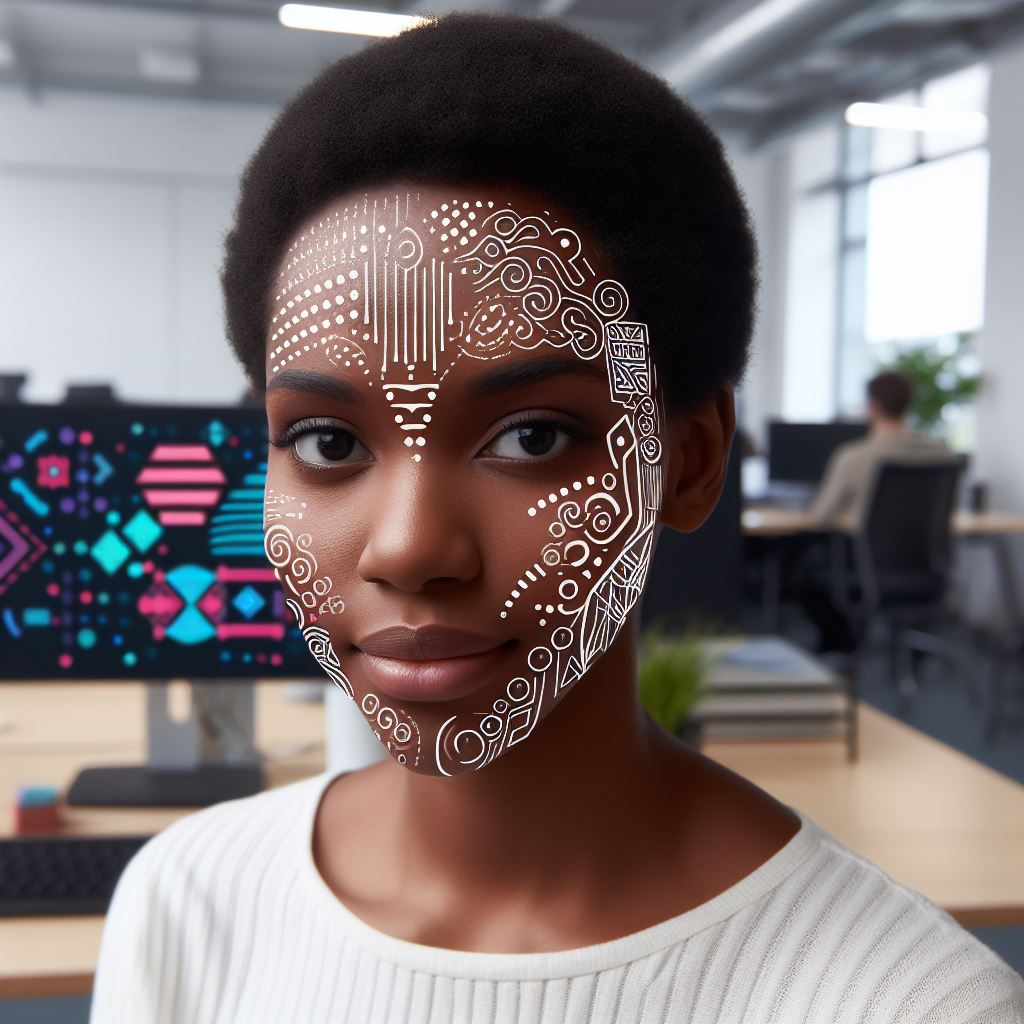Introduction
Collaborative projects in Scratch involve working together with people from around the world to create interactive and engaging digital projects.
By connecting with global makers, learners can expand their creativity, understanding, and perspective.
Brief explanation of what collaborative projects in Scratch are
Collaborative projects in Scratch refer to the process of working together with individuals, regardless of their geographical location, to create projects using Scratch programming language.
It allows multiple users to contribute their ideas, skills, and knowledge to develop interactive digital artifacts.
Importance of connecting with global makers
Connecting with global makers through collaborative projects in Scratch offers numerous benefits.
It enhances cross-cultural understanding, promotes diversity, and encourages the exchange of ideas and perspectives. It allows learners to broaden their horizons and develop a global mindset.
Collaboration with global makers also fosters teamwork and communication skills, as participants must effectively communicate and coordinate their efforts.
Learning from different cultures and backgrounds helps individuals develop critical thinking and problem-solving abilities, as they encounter different perspectives and approaches.
Additionally, connecting with global makers encourages creativity and innovation. By collaborating with individuals from different regions, learners are exposed to diverse ideas, techniques, and styles.
This exposure sparks inspiration, encourages experimentation, and ultimately leads to the creation of more unique and impactful projects.
Moreover, collaborating with global makers provides opportunities for networking and building lasting connections.
Learners have the chance to establish relationships with like-minded individuals, creating a supportive and collaborative community.
These connections can lead to future collaborations and continued growth in the field of digital making.
In essence, collaborative projects in Scratch offer incredible opportunities to connect and engage with global makers.
This connection not only expands learners’ knowledge and understanding but also promotes cultural exchange, teamwork, and innovation.
Tech Consulting Tailored to Your Coding Journey
Get expert guidance in coding with a personalized consultation. Receive unique, actionable insights delivered in 1-3 business days.
Get StartedEmbracing collaboration in a global context is essential for fostering creativity, expanding perspectives, and shaping the future of digital making.
Benefits of Collaborative Projects in Scratch
A collaborative project in Scratch can have various benefits for both individuals and the community as a whole.
By working together, users can foster essential skills, exchange ideas, and create innovative solutions.
Encourages teamwork and peer learning
- Collaborative projects in Scratch provide an opportunity for users to work as a team.
- Teamwork allows individuals to share responsibilities, leverage each other’s strengths, and produce better outcomes.
- Users learn from one another, helping each other understand coding concepts and techniques.
- Peer learning enhances communication skills, as users need to effectively express their ideas and provide feedback.
Fosters creativity and problem-solving skills
- Collaborating on projects in Scratch promotes creativity by encouraging users to think outside the box.
- Combining different perspectives and diverse ideas lead to innovative and unique solutions.
- Users are exposed to different problem-solving approaches, expanding their own problem-solving skills.
- The process of collaborating and overcoming obstacles fosters resilience and perseverance.
Allows for the exchange of ideas and diverse perspectives
- Collaborative projects in Scratch create an environment where users can freely exchange ideas.
- The exchange of ideas leads to a more comprehensive understanding of different topics.
- Diverse perspectives enable the exploration of multiple solutions and enhance critical thinking.
- Users learn to value and respect different opinions and viewpoints, promoting inclusivity.
In fact, collaborative projects in Scratch offer numerous benefits to participants. Through teamwork and peer learning, users develop essential skills and improve their understanding of coding concepts.
Collaborative projects also foster creativity and problem-solving skills, encouraging unique solutions.
Additionally, the exchange of ideas and diverse perspectives leads to a more comprehensive understanding of topics and promotes inclusivity.
Engaging in collaborative projects in Scratch not only enhances individual growth but also contributes to the broader community by creating innovative and impactful projects.
Read: The Role of Scratch in STEM Education: Benefits and Use Cases.
Finding Global Makers on Scratch
In order to successfully collaborate with global makers on Scratch, it is important to explore the online community and its features.
By using various tools and techniques, you can connect with like-minded individuals from around the world. Here are some steps to help you find global makers:
Scratch online community and its features
- Visit the Scratch website and create an account to become a part of the community.
- Take some time to navigate through the website and familiarize yourself with its features.
- Explore different projects created by Scratch users to get inspired and learn from their work.
- Leave comments on projects you find interesting and engage in conversations with other users.
- Participate in discussions and share your own projects to establish yourself within the community.
Different ways to search for collaborators worldwide
- Use the search functionality on Scratch to find users based on their username or project title.
- Filter the search results by location to narrow down your options and focus on global makers.
- Look for projects that indicate collaboration or mention the need for collaborators.
- Reach out to users who have created similar projects or share similar interests.
- Consider joining collaborative projects initiated by other Scratch users.
Importance of joining relevant groups or forums
- Search for relevant groups or forums on Scratch that focus on specific topics or interests.
- Join these groups to connect with users who share similar passions and goals.
- Participate actively in discussions and contribute your ideas and expertise to build connections.
- Share your projects and seek feedback from group members to improve your skills.
- Stay updated with group activities and announcements to maximize your collaborative opportunities.
By following these steps, you can effectively find global makers on Scratch, expanding your network and fostering meaningful collaborations.
The Scratch online community provides a platform where individuals from different backgrounds can come together to create innovative projects.
It is a place where ideas are shared, skills are developed, and friendships are formed.
Whether you are interested in creating games, animations, or interactive stories, Scratch offers numerous opportunities to connect with like-minded individuals who can enhance your projects through their unique perspectives and skills.
Build Your Vision, Perfectly Tailored
Get a custom-built website or application that matches your vision and needs. Stand out from the crowd with a solution designed just for you—professional, scalable, and seamless.
Get StartedRemember, collaboration is not just about working together on a project; it is about learning from others, gaining new insights, and building a global network of makers.
So, take the time to explore the Scratch community, search for collaborators worldwide, and join relevant groups or forums. Embrace the power of collaboration and unleash your creativity on Scratch!
Read: Diving into Advanced Scratch: Tips, Tricks, and Techniques
Engaging in Collaborative Projects
Steps to Initiate a Collaborative Project on Scratch
- Start by brainstorming project ideas and deciding on a common theme or goal.
- Find potential collaborators by joining Scratch communities or reaching out to fellow makers.
- Introduce yourself and your project idea, explaining why collaboration would be beneficial.
- Discuss roles and responsibilities, ensuring each member’s expertise is utilized effectively.
- Create a shared workspace on Scratch where all collaborators can access and contribute.
- Set up regular communication channels to keep everyone informed and engaged.
- Establish a project timeline, including milestones and deadlines to keep the project on track.
- Encourage open communication and feedback throughout the project duration.
- Document the project’s progress and celebrate achievements together.
Tips for Effective Communication and Task Delegation
- Use clear and concise language when communicating ideas or assigning tasks.
- Choose a platform or tool that facilitates smooth collaboration and file sharing.
- Active listening is crucial; encourage all team members to express their thoughts and concerns.
- Encourage frequent updates and progress reports to ensure transparency and accountability.
- Clarify expectations and set realistic deadlines for each task or deliverable.
- Delegate tasks based on each member’s strengths and expertise, fostering a sense of ownership.
- Provide constructive feedback and support to inspire growth and improvement.
- Consider time zones and availability when scheduling meetings or discussions.
- Address conflicts or disagreements promptly and diplomatically to maintain a harmonious collaboration.
The Significance of Setting Shared Goals and Timelines
In a collaborative project, shared goals and timelines play a pivotal role in driving progress and ensuring synchronization among team members.
When setting shared goals, it’s essential to involve all collaborators in the decision-making process. This helps in creating a sense of ownership and commitment towards the project.
Clear and well-defined goals provide purpose and direction, guiding the team’s efforts towards a common objective. They help prioritize tasks, allocate resources efficiently, and streamline decision-making.
Timelines serve as a roadmap for the project, outlining specific milestones and deadlines. They promote accountability and enable members to track progress effectively.
Additionally, shared goals and timelines foster collaboration by harmonizing individual efforts and promoting collective problem-solving.
They enhance communication and coordination, minimizing conflicts and confusion.
Regularly reviewing and evaluating progress against set goals and timelines allows for necessary adjustments and reinforcement of collaboration strategies.
It helps in identifying areas that require improvement and celebrating achievements collectively.
To ensure the success of collaborative projects, it is crucial to establish a culture of shared accountability, where all team members take responsibility for achieving shared goals and adhering to timelines.
By embracing effective communication, task delegation, and setting shared goals and timelines, Scratch users can embark on transformative collaborative projects that connect global makers and foster a vibrant community of creators.
Read: Scratch vs. Other Coding Platforms: An In-depth Comparison
Optimize Your Profile, Get Noticed
Make your resume and LinkedIn stand out to employers with a profile that highlights your technical skills and project experience. Elevate your career with a polished and professional presence.
Get Noticed
Showcase Successful Collaborative Projects
Examples of popular and innovative collaborative projects in Scratch
- “World Travelers” – A project where students from different countries collaborate to create a virtual world tour.
- “Environmental Guardians” – Students form teams to create games that educate others about environmental conservation.
- “Super Squad” – A collaborative game where students design and code their own superhero characters.
Testimonials from participants on their experiences
- Sarah, a participant in “World Travelers”, said, “Collaborating with students from other countries helped me learn about different cultures.”
- Jason, a member of “Environmental Guardians”, shared, “Creating a game together made me realize the power of teamwork and the importance of environmental awareness.”
- Emma, who participated in “Super Squad”, expressed, “Working with others on this project made it more fun and allowed us to create unique characters.”
Impact and achievements of these projects
- “World Travelers” project received positive feedback from teachers as it encouraged global connectivity and enhanced geographical knowledge.
- “Environmental Guardians” game reached a wide audience and increased awareness about environmental issues among players.
- “Super Squad” project gained recognition for its creativity and was showcased at a local coding event, inspiring other students.
In short, these popular and innovative collaborative projects in Scratch demonstrate the power of teamwork, cultural exchange, and creativity.
Through testimonials and the positive impact they’ve had, it is evident that collaborative projects in Scratch can foster learning, global connections, and social awareness.
Read: What Employers Think of Online Coding Degrees in 2023
Overcoming Challenges in Collaborative Projects
Common obstacles and how to overcome them
- Communication barriers can be tackled by using clear and concise language.
- Time zone differences can be managed by setting up a shared schedule and using time management tools.
- Task distribution can be facilitated by breaking down the project into smaller, manageable parts.
- Technical difficulties can be resolved by seeking help from online forums or technical support.
Effective conflict resolution strategies
- Encourage open and respectful communication to establish a safe space for discussing conflicts.
- Listen actively and empathetically to each team member’s perspective before trying to find a solution.
- Focus on finding common ground and compromise to reach a resolution that satisfies everyone involved.
- Document agreements and decisions to avoid future misunderstandings.
- Involve a mediator or facilitator if necessary to assist with conflict resolution.
Importance of perseverance and maintaining motivation
In collaborative projects, setbacks and challenges are inevitable, but it’s crucial to keep going.
Here are some ways to maintain motivation and perseverance:
- Set realistic goals and break them down into achievable milestones.
- Celebrate small victories and milestones to boost morale and motivation.
- Encourage teamwork and provide support to each other during difficult times.
- Take breaks when needed to recharge and avoid burnout.
- Stay optimistic and believe in the collective ability of the team.
- Keep the end goal in mind and remind oneself of the purpose and impact of the project.
Overcoming challenges in collaborative projects is essential for successful and fulfilling outcomes.
By addressing common obstacles, practicing effective conflict resolution strategies, and maintaining motivation, teams can navigate through difficulties and achieve impressive results.
Collaboration not only fosters creativity but also helps individuals grow personally and professionally.
Collaborative Project Ideas
Exciting and Diverse Project Ideas for Collaboration
- Storytelling Collaboration: Create a collaborative story where each participant adds a sentence or paragraph.
- Artistic Creations: Collaborate on a digital art project, such as creating a collaborative digital painting or animations.
- Virtual Science Fair: Conduct experiments and share findings within the Scratch community.
- Music Mashup: Collaboratively create a music composition by combining different musical tracks.
- Coding Challenges: Work together on solving complex coding problems or create a coding competition within the community.
- Interactive Quizzes: Develop interactive quizzes on various subjects and invite others to contribute questions.
- Game Design: Collaborate on developing a unique and engaging game with multiple levels and characters.
- Virtual Tours: Create interactive virtual tours of cities, landmarks, or historical places accompanied by informative descriptions.
- Language Learning: Collaborate on creating a language-learning simulation or a vocabulary-building game.
- Animated Stories: Work together to create an animated storybook with different chapters and various characters.
Projects Promoting Cultural Exchange or Tackling Global Issues
- Cultural Showcasing: Collaborate with people from different countries to create projects that showcase their culture, traditions, or festivals.
- Environmental Awareness: Develop projects that raise awareness about environmental issues and inspire sustainable practices.
- Humanitarian Efforts: Collaborate on projects related to social causes like poverty alleviation, education, or promoting equality.
- Simulating Historical Events: Work together to create interactive simulations of historical events to educate and engage users.
- Health and Wellness: Develop a project that promotes health and wellness practices, mental health awareness, or physical fitness.
- Community Problem-solving: Collaborate on addressing local community issues, such as waste management or renewable energy solutions.
- Robotics and Automation: Work together to design and build robots or automated systems for specific purposes or tasks.
- Sustainable Innovations: Generate collaborative projects focused on sustainable solutions, such as renewable energy or waste reduction.
- Cultural Exchange Games: Create interactive games that teach players about different cultures, fostering understanding and appreciation.
- Global Peace Initiatives: Collaborate on projects that promote peace, conflict resolution, or intercultural dialogue.
Encouraging Readers to Brainstorm and Propose Their Ideas
Let your imagination run wild! Think about your passions, interests, and global issues that matter to you.
Share your project ideas in the comments section below and let’s inspire each other to collaborate and make a difference!
Conclusion
Collaboration in Scratch offers numerous benefits, promoting learning, creativity, and teamwork.
Connecting with global makers exposes users to diverse perspectives, cultures, and ideas.
Start collaborating today to broaden your skills, expand your horizons, and embrace new possibilities in Scratch.
Collaborative Brilliance: Unleashing Global Connections in Scratch
- Benefits of Collaboration in Scratch:
- Shared Ideas: Collaboration fosters the exchange of creative ideas among Scratch enthusiasts.
- Skill Enhancement: Working with others enhances coding skills and introduces new perspectives.
- Community Building: Collaborative projects contribute to a vibrant global Scratch community.
- Shared Ideas: Collaboration fosters the exchange of creative ideas among Scratch enthusiasts.
- Value in Connecting with Global Makers:
- Cultural Exchange: Connecting globally brings diverse cultural influences into Scratch projects.
- Learning Opportunities: Collaboration exposes makers to different coding styles and problem-solving approaches.
- Friendship and Support: Building connections with global makers establishes a supportive network within the Scratch community.
- Cultural Exchange: Connecting globally brings diverse cultural influences into Scratch projects.
- Encouragement to Start Collaborating:
- Take Initiative: Initiate collaborative projects on platforms like Scratch, embracing a world of creative possibilities.
- Expand Horizons: Collaborate to broaden your Scratch skills, learning and growing with a global community.
- Take Initiative: Initiate collaborative projects on platforms like Scratch, embracing a world of creative possibilities.
Finally, the magic of collaborative projects in Scratch extends beyond code—it connects minds globally, fostering creativity and camaraderie.




